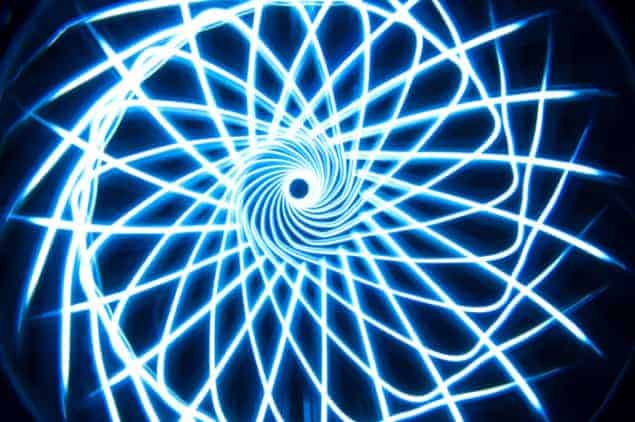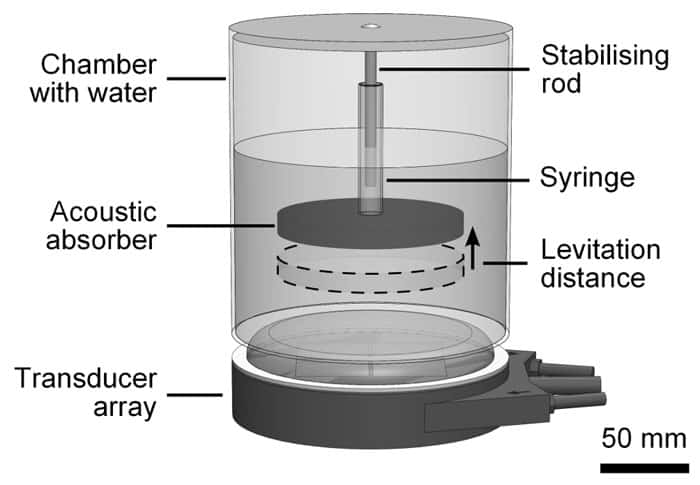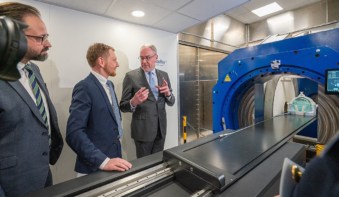
An international team of physicists has simultaneously measured the angular momentum and torque exerted by acoustic waves for the first time. It found that this ratio agrees exactly with the predicted theory for acoustic and optical waves. According to the researchers, their techniques may also have potential in medical imaging and treatment.
A fundamental principle of optics and acoustics is that waves carry momentum, and can therefore exert a force. Equally important is the notion that they can also carry angular momentum and exert a torque. The ratio between these two quantities – the push and the twist – is central to the physics of waves and has long been taken for granted without direct experimental proof of its validity.
Difficulties with optics
The concept of radiation pressure has traditionally been explored and exploited in optics – for example, it is the basis of the “optical tweezers” used to grab and manipulate microscopic objects in microbiology and nanotechnology. The force of a light beam is equal to its power divided by the speed of light. Its torque is proportional to the radiation pressure, which depends on the varying properties of acoustic and optical beams. Because the speed of light is extremely large, the force and torque exerted by a light beam are very small and therefore difficult to measure. To complicate matters further, it is hard for scientists to work out precisely how well an object absorbs linear and angular momentum from a light beam, and hence to calculate the forces and torques exerted.
Sound versus light
For these reasons, nobody has ever managed to measure simultaneously the force and torque of a light beam on an object. Fortunately, the same equations apply in acoustics, where the speed of light is replaced by the much smaller speed of sound. A sound beam of the same power therefore exerts both a stronger push and twist, making it easier to measure the ratio between the two.
Now, ultrasound physicist Christine Demore, biophotonics researcher Mike MacDonald and colleagues from the Institute for Medical Science and Technology at the University of Dundee in the UK, together with Gabriel Spalding from Illinois Wesleyan University in the US, have levitated and twisted a rubber puck in water by bombarding it with a “vortex beam” of ultrasound – a twisted coil of sound shaped a bit like a DNA double helix. This was done to verify experimentally the angular momentum to torque ratio and directly prove this fundamental theory. The researchers found – as expected – that the ratio of the torque to the linear force on the puck was equal to the ratio of the number of intertwined helices per wavelength.
Applications beyond physics
“The key part of the paper is the fact that we’ve demonstrated that ratio,” explains MacDonald, “but the advance that we had to make to get that result was the level of control over the ultrasound beams, which hasn’t been possible before.” Demore adds that developing focused ultrasound has applications well beyond pure research. “There’s a whole field developing of using ultrasound to kill tumours completely non-invasively,” she says. There is also a project to develop “sonotweezers” that are based on optical tweezers but which are able to move larger and heavier objects.
Optical physicist Miles Padgett from the Glasgow University in the UK describes the work as “a beautiful experiment”. He feels that “people active in the field won’t be surprised by the ratio because essentially the results show are as one would expect”. “But if you never checked the things that we know, you’d never find the things that we don’t,” he says.
The paper has been accepted for publication in Physical Review Letters.




